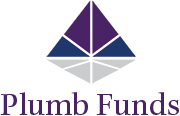
Tom Plumb thinks there is still potential upward movement in the market. He discusses areas he sees opportunities, such as subscription-based operating systems.
Interview Transcript
Carol Massar: Tom, good to have you here with us.
Tom Plumb: Thanks, Carol.
Carol: You know, I was saying to you, you know, I always love when I can look at a fund manager’s track record and you’ve done really, really well and consistently. I am curious about the mix right now ’cause I feel like fixed income everybody is kind of, oh, whoa is me kinda thing. Talk to us about the mix right now. What’s the balanced mix between equities and fixed income?
Tom: We’re about 65 percent stocks and about 35 percent in fixed income.
Carol: Pretty normal, is that pretty normal for you guys?
Tom: It’s pretty much our neutral area.
Carol: Okay.
Tom: But our fixed income, remember, is meant to focus on preservation of principle and then capturing some yield. So –.
Carol: And it’s corporate, right?
Tom: Primarily corporate bonds. A lot of bonds that were issued prior to the financial crisis by banks that had unique characteristics in that they would pay LIBOR plus 3.5 percent, but because their grandfathered by Basel, they end up being considered for the capital, so they don’t get called even though all their new cost of capital would be so much less.
Jason Kelly: And so how do you generally feel about this market as we get into the end of the year, especially as we look back to a year ago when we were on the verge of a pretty rough last couple weeks of the year.
Tom: It was brutal last year, and you know, I guess I think that we’re still in a very positive secular trend here, that the market still potentially has the ability to go up. There are some good investments at reasonable prices. The interest rates, even though we bounce around quite a bit, they’re so low that they have basically low or no cost of funds for a lot of things.
Carol: Right.
Tom: And I also think that, you know, a lot of people are concerned about the low capital expenditures in this economy that the businesses have had, but I think that they get mistaken for the fact that this isn’t your father’s economy anymore. That capital investment was meant to improve your flexibility, add to capability and add efficiencies, and right now that’s software, software as a service. Companies instead of –.
Carol: It’s not buying – or making a big plant, right, or something like that.
Tom: Instead of building a plant, buying a lot of computers and putting in your computer data center, you are subscribing to the cloud, for example. You’re subscribing to an operating system that’s gonna increase your efficiencies, your cash turn.
Carol: So your point is that it’s not that they’re not spending, it just isn’t costing like it used to, right? So the numbers don’t seem as impressive?
Tom: They don’t seem as impressive because it’s not a capital expenditure.
Carol: Yeah.
Tom: I’m paying a monthly premium for a lot of these services that in the old days, you know, when you think about working for a corporation and they’d have a big debate, should we spend the money to go to Windows 7 from Windows 5 or Windows 10, should we wait until we see it’s proven before we buy it? Well, now everything is a subscription model with automatic updates.
Carol: So that’s why you like Microsoft?
Tom: That’s why we like Microsoft. The company has had an incredible transition in the last 20 years from selling a system on a one-off basis and then looking to sell the next one to selling it as a subscription and now 50 percent of the revenues is cloud.
Jason: Amazing.
Tom: Yeah, it’s amazing.
Carol: So recurring fees, they know they’re gonna keep coming in, right, for the most part.
Tom: Right. And capital light, you know. When you think about the old capital investment, you used to build a plant, you had to borrow money, you had the cost of capital.
Carol: Right.
Tom: Now, what does it cost for them to turn one more Windows online subscription turned on?
Jason: Right. And so how does that play through – are there other names sort of in the cloud space that you like as well?
Tom: A lot of ’em that either use the cloud or even, you know, obviously the two that are the leaders in providing those services are Amazon and Microsoft.
Jason: Right.
Tom : But you look at how everyone is using it and using it for their subscription, building their software as a service model, as they go to the cloud it just increases the ability for them to offer all the redundancies, all the systems. And if anyone here in the audience has ever gone through system conversions for main operating systems, you know it’s hell. So when you have the ability to just have moderately continuously updated software, it’s a godsend.
Carol: Talk to us about Tyler Technologies. It’s almost an $11 billion market cap company. It’s based in Dallas, Texas. It’s not a household name. It’s up more than 51 percent so far this year. What –?
Jason: Ticker is TYL.
Carol: Yeah, right. So tell us about this company.
Tom: So, when you think about, again, software as a capital investment, when you look at municipalities, there’s so many different ones in the United States and each one of ’em may have their own operating system. There is things like the 911 system. There is the court system. There’s how they collect their real estate taxes. This company is offering these different suite of services to these municipalities, much of it now is a subscription base, so it’s got the recurring revenue stream and all of the things we talked about.
Carol: Right.
Tom: And who is their competition? Over half the time that they’re put into a new system, they’re either replacing something that was developed internally or provided by a company that is no longer in existence. They say that a number of the systems are old IBM DOS systems, for example.
Carol: That’s pretty cool. I was just looking at some of their revenue growth number, expected to be up about 19 percent. I think this is quarter to quarter here, but it’s pretty impressive.
Tom: Right. We expect double digit revenue growth going on for a number of years.
Carol: Yeah.
Jason: Only about 40 seconds left. Anything you’re selling or avoiding at this point?
Tom: Well, we are the type of company that does avoid this bet on commodities, commodity pricing. We know that if you guess right at the right time you can make a ton of money but to us it’s – we’d rather have a business model that has developed recurring revenue stream in a growth industry with a secular tailwind.
Carol: Just quickly, Visa, Mastercard, Discover, American Express, I mean this is – you guys are all in on this because you don’t care whether it’s – who is doing it. I mean these are the guys behind the scenes doing all the processing, right? Just got about 40 seconds.
Tom: Right. And that’s where we think that you’ll continue to grow in multiples of the GDP growth around the world in these industries, they already are growing that fast with the consumer to business models.
Carol: Right.
Tom: But the business to business models that they’re developing services for are just growing exponentially.
Carol: Pretty cool stuff.
Jason: All right.
Carol: Tom, thank you, thank you, really appreciate it. Love to see you. Tom Plumb, President and Chief Investment Officer at Plumb Funds, as we said based in Madison, Wisconsin in our Bloomberg Interactive Broker Studio.
[End of Audio]
Opinions expressed are those of the author or Plumb Funds and are subject to change, are not intended to be a forecast of future events, a guarantee of future results, nor investment advice. References to other mutual funds should not be interpreted as an offer of these securities.
Performance data quoted represents past performance and does not guarantee future results. The investment return and principal value of an investment will fluctuate so that an investor’s shares, when redeemed, may be worth more or less than their original cost. Current performance of the fund may be lower or higher than the performance quoted. Performance data current to the most recent month-end may be obtained by calling 1-866-987-7888 or visiting www.plumbfunds.com.
Click here for holdings and most recent quarter-end performance for the Plumb Equity Fund.
Click here for holdings and most recent quarter-end performance for the Plumb Balanced Fund.
Fund holdings are subject to change at any time and should not be considered a recommendation to buy or sell any security.
Earnings growth is the annual rate of growth of earnings from investments.
LIBOR is the basic rate of interest used in lending between banks on the London interbank market and also used as a reference for setting the interest rate on other loans.
CATEGORIES
SIGN UP FOR THE PLUMB LINE
STAY UP TO DATE ON OUR CURRENT INSIGHTS AND PORTFOLIOS.
